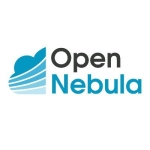What is our primary use case?
We're using Nutanix Beam and Flow. They are the cloud cost governance and cloud security governance products, but they may have different names now.
We're a large university. We have hundreds of cloud accounts in all three of the vendors: Microsoft, AWS, and Google. This product allows us to look at all of them with one dashboard and do a lot of pricing and cost work across them with one dashboard for the finance side. For the flow side also, it has a lot of good tools for AWS and GCP but not as many for Azure. As a big university, we use it to protect ourselves and keep ourselves safe while we're using the cloud.
We also have this other thing called cloudbank.org. So, we have two different licenses with Nutanix. One for CloudBank, and one for the University of California, San Diego. The CloudBank one is all about researchers from all over the country. We have about 115 different researchers there doing all kinds of things.
How has it helped my organization?
We saved a ton of money by having awareness of how we're spending. We can see where we were spending incorrectly.
We haven't done much automation with it. We have some automated reports on a monthly basis that are very useful for billing. There are also automated security checks and flows, which have helped us stay safe a number of times. We had one instance a couple of weeks ago where somebody opened up a public S3 Amazon storage folder to the internet. They shouldn't do that, and it told us.
What is most valuable?
The way it aggregates all the accounts and lets me do math across all the accounts, even across multiple vendors or multiple cloud providers, is valuable. The other part is Chargeback. We use that to validate our bills.
What needs improvement?
Some of the UI is a little clunky. They do listen when I tell them about this, but one thing that drives me insane is that it defaults to a cumulative view of how much you've spent, as opposed to day-to-day. Even when you've selected day-to-day, you have to turn off a cumulative switch. They've done some work on fixing that in the UI, but I don't know why they're thinking that way and why they think people would want to look at it that way.
The one thing I wish it had was that it worked more closely and more cleanly with custom data inputs, which I know is a lot to ask.
It could probably have a nice warning page for all the things. Not for me, not for the big administrator, but for all my users to whom I give accounts so that they can look at their own things. It would be helpful if they had a landing page that just said, "Hey, you're losing money here. You're possibly losing here or there." It expects you to have a certain amount of knowledge of what you're doing when you first come in. It does have a dashboard, but it's very esoteric. Something just right on top that says "You're bleeding cash right here," and a graphic would be nice.
If I want to set up a new account, there's no API. It's all done by hand. It would help us in the deployment of new users if there was a new user API that we could call with a program, as opposed to doing it by hand.
We would like to be able to report how busy our machines are so that if a machine has been sitting there idle all week, we should turn it off. Sometimes, it's not just how busy the processor was, it's also about how much RAM was being taken up when that thing was running. Often, it can run low CPU and high RAM, and we still have to keep it running because of that. There is this arcane workaround to get that to work by installing something special on the individual machines one by one. Deploying that way is very arcane. I wish there was a better way of doing that. It seems it works with CloudWatch, at least on AWS, or CloudTrail, to do it, but I don't know for sure. They probably would've done it if it was easy, but it would help a lot if, in the deployment, it also was aware of memory usage, not just CPU usage by default.
For how long have I used the solution?
We've been using it for about three years.
What do I think about the stability of the solution?
Its stability is very good. In three years, we have had one actual outage, and maybe two or three data outages from something we need to do ourselves. We haven't had many problems on that end at all. They've been doing some interesting things with the user database backend, which threw us off for a little bit one time. It was to get some features done that I wanted, so I don't care.
What do I think about the scalability of the solution?
Its scalability is great. That was the whole reason we bought it. It was the fact that it can handle so many accounts at once, all in one dashboard to get to things. It's great.
We have 40,000 students and almost the same amount of staff. The University of California is the largest employer in the State of California. We work mostly with UC San Diego itself, but we also work with CloudBank in the National Science Foundation (NFS) to give out awards for cloud usage for researchers from all over the country. It is a big academic, an R1, with about two billion a year in research and other things.
How are customer service and support?
I would rate their support a 10 out of 10. They really care, and I appreciate it.
How would you rate customer service and support?
Which solution did I use previously and why did I switch?
We had spreadsheets, Perl scripts, and things like that.
How was the initial setup?
It's a SaaS deployment. You just log in and go. It would help us in the deployment of new users if there was a new user API that we could call with a program, as opposed to doing it by hand, but everything else is just web-based. So, it's very easy to deploy.
Its initial setup is very straightforward. There are only a few bits of information you have to give the system for it to go and start looking at your stuff. You need to provide some information or some permissions, and then you can go. That's great, but one caveat, which is not Nutanix's fault but Microsoft's fault for how they license, is that it could be a little arcane, although their wizards walk you through it very well. I only had to get help once on that, and then from then on, I knew what I was doing going forward. There are about six or seven screens of details that you have to put in and pull from this place, and this place, and this key, and that key, but that's the cloud. That's not Nutanix's fault. The fact that we could get it to work is great. It's hard to say standards because nobody is setting standards here, but there are some conventions that they follow which are really nice.
It doesn't require any maintenance. They do it. They take care of all the backend.
What about the implementation team?
We used a reseller for the purchase but not for the implementation. We did the implementation ourselves. Nutanix was great. The reseller was great. They're both focused on what they should be focused on. One of the great things about Nutanix is that they have Slack. We've set up a Slack channel for them there. We could talk quickly about problems that were happening. They also have their India team on Slack. I can't talk to them in real-time, but with about a 10-hour lag, by the time I get up the next morning, they've answered pretty much everything I've had a problem with. In terms of responsiveness, that has been helpful.
What was our ROI?
We have certainly seen an ROI. There have been cost savings, and when people know we're watching, that also helps keep the costs down.
What's my experience with pricing, setup cost, and licensing?
We've got some very good deals on it. We have very active resellers in the middle who've done a good job of keeping us at a good price. Nutanix is treating us really well because we're academics, and they want people to use the product. I do give a lot of feedback on what they've done. Before COVID, I used to do a lot of talks for them as well.
Its acquisition and support cost isn't any harder or easier than others. We have a good sales team, and I appreciate that good resales team in the middle that takes care of us and pays attention. Its cost is reasonable. The features are very good. Once in a while, I talk to my friends who use CloudCheckr to see how we're doing in comparison. It seems Nutanix reports are a lot richer, and you can drill down more to where you want to go, but I haven't spent hours and hours in CloudCheckr.
Nutanix has been hinting at it a little bit that things are changing or changes are coming in terms of multiple tiers, but I'm not thrilled because I liked what I've had to work with so far, and I don't know where that maps into the tiers. I guess tier could work if I knew there were upper-level services I just didn't need, but if they're trying to tease more money out of us by isolating a few things in an upper tier, we won't be happy with that.
Which other solutions did I evaluate?
We evaluated other options. CloudCheckr was a pretty good product, but we didn't think we could work as closely with them as we have with Nutanix. They have been phenomenal to get changes made for things that we need to do. Especially because we're an academic institution, as opposed to a corporate, we flow a lot of credits and a lot of research grants. It does a lot of funky things to our financial data. They worked with us very closely on that to get it all done.
CloudCheckr is a fine product. A lot of the UCs do use CloudCheckr. We talked to them, but we weren't sure they could do the custom stuff that we wanted them to do, whereas Nutanix could do that.
We also looked at CloudHealth pretty closely, which is the VMware one. They got acquired. So, it wasn't useful to look at anymore. There was also one more that was a non-player. So, we've been keeping an eye on the space to see what's going to happen here. We thought somebody would buy Nutanix, but they're so big in some other ways that it hasn't happened yet. That was it. All these products are kind of the same, but it was also about the people we would work with. The Nutanix people we've worked with have been very helpful, and we knew that talking to them. So, we picked them.
In terms of the setup and ease of use, we did some testing on the VMware product, and it was a nightmare. The cloud setup in general, especially at an enterprise level, can be a real nightmare, but Nutanix and their engineers had a lot of experience with this. So, we were able to get through a lot of it that way. When we worked with the VMware product, it was endless meetings and back and forth. They were just not understanding where we were coming from. They also wanted to span VMware and cloud at the same time. We have very thick VMware instances here, which made it a lot more complicated than just looking at the cloud itself. For the most part, getting the VMware product set up was very difficult, whereas getting Nutanix set up was not difficult at all. It was difficult only when we started customizing it and hurting ourselves. Cloud is a mess anyway. So, I wouldn't expect anything to be easy, but once it's set up, it just works. It's not that big a deal. If it was really hard, I'd have a problem with it.
What other advice do I have?
We don't use NCM to manage Nutanix and VMWare infrastructure. We only use it for vendor clouds.
We've done a little bit of work with their query language, and that's always very fast and very useful. These faster outcomes are pretty important, but I'm not expecting huge performance from a product like this. It's not like a hospital or something like that, but they are as up-to-date as the cloud providers can provide the data to them, and that's what matters to me. If the cloud providers were real-time, I would expect Nutanix Cloud Manager to be real-time as well, but it's not. So, it's perfectly fine for us.
I would rate it a nine out of ten.
Disclosure: PeerSpot contacted the reviewer to collect the review and to validate authenticity. The reviewer was referred by the vendor, but the review is not subject to editing or approval by the vendor.
















